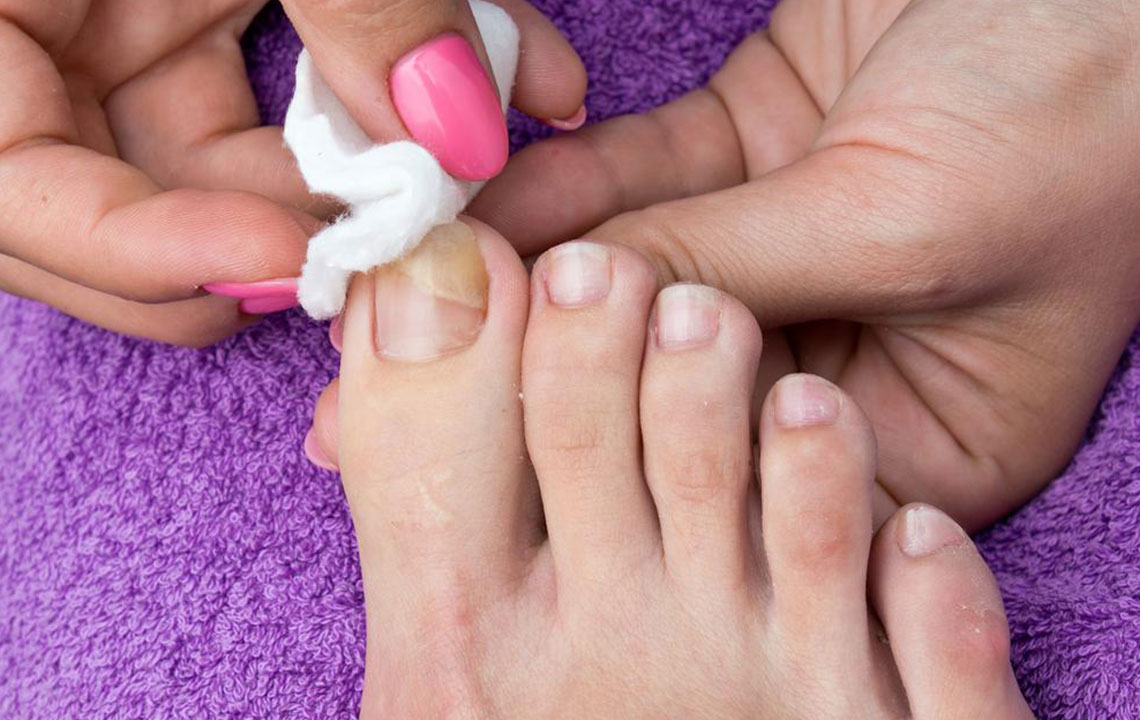Nail Fungus – Causes, Symptoms, and Cure

Nail fungus is a common condition that begins as a white or yellow spot under the tip of your fingernail or toenail. As the fungal infection goes deeper, it may cause your nail to discolor, thicken and crumble at the edge. It can affect several nails. There’s a lot about nail fungus on the Internet. However, the article focuses on how to cure nail fungus.
Before delving into how you can cure nail fungus, it’s essential to analyze what causes this nail attack.
Causes of fungus
- Just as the term suggests, nail fungus related infections are the result of the infestation of microorganisms called fungi on your nails. There’s this particular family of fungi by the name of dermatophyte which has a significant stake in the nail attack mafia organization.
- Age is a detrimental factor of nail fungus too. As the nails on your hands or feet age with time, they are prone to dry and become brittle; paving the way for fungi to enter your nails.
- In other cases, poor blood circulation in feet, and a weak immune system could be possible reasons for nail fungus.
However, it is important to know the symptoms before knowing how to cure nail fungus.
Symptoms of nail fungus
- Sudden thickening of nails
- Visible discoloration (colors include whitish to brownish yellow).
- Brittle or ragged nails.
- A dark shade on the surface of your nail as a result of debris built up below the surface of your nails.
How to cure nail fungus
Visit the dermatologist
This is the safest and quickest way to recovery. A professional dermatologist knows about nail fungus way more than most people, and it would be an entirely safe bet to shell out a few bucks and time to visit a dermatologist.
If you think your situation isn’t that serious or if you have doctor-phobia, below is a list of home remedies to cure nail fungus.
Vicks Vaporub
That’s right folks! That paste you smear across your nostrils and your chest when you’re struggling with a cold has more powers than just helping you with your phlegm. With ingredients such as camphor and eucalyptus oil, applying a dab of Vicks onto a cotton pad and cleaning your nails with it is very useful in getting rid of nail fungus. Make sure you apply the Vaporub at least once every day to experience immediate results.
Listerine and vinegar
Mouthwashes such as Listerine have ingredients such as menthol and thymol. Vinegar happens to be acidic which is something that fungi hate. Hence, combine the mouthwash and vinegar in equal proportions, and soak your nails in the solution for an hour on a daily basis to avoid nail fungus.
Tea tree and orange oil
Oil from the tea tree happens to be natural disinfectant boasting of anti-fungal properties. Combination of tea tree oil with orange oil is extremely instrumental when it comes to eliminating nail fungus.
Baking soda and vinegar
This combination is effective to eradicate all sorts of fungi from your nails. Mix a few tablespoons of baking soda with vinegar and soak your hands and feet in. By doing this diligently for a couple of weeks, you will experience good results in no time.
Plain coconut oil
It’s about to get a bit scientific here, but that’s to understand how coconut oil is super effective in treating nail fungus. Something called the fungal membrane is a crucial detrimental factor in the lives of fungi. Coconut oil plays an important role by entering the fungal membrane and disturbing the life-sustaining element of fungi resulting in the disintegration of nail fungi.
Those are a few ways to cure nail fungus. To prevent the re-infestation of fungi in your nails, here are a few ways you can prevent nail-fungi from attacking your nails.
- Keep your hands and feet dry
Moisture welcomes fungi, and no one likes that. So, make sure you dry the skin between your toes right after you shower and make sure that you are not in your pantyhose all day long. They provide a great environment for fungi growth. Also, change your socks right after you are done working out or playing a sport.
- Use a disinfectant
Wash your socks and pantyhose using a disinfectant, as this helps in killing all possible fungi that might develop as a result of the moisture your garments had all day.
- Develop your immune system
An active immune system is always essential to being healthy and is the same case with your nails. Manage your stress levels by meditating or working out. Look to incorporate enough vitamins and minerals in your diet to stay healthy.
Although nail fungus sounds scary, it isn’t much of a problem if you take quick and consistent action. Look for the early signs of discoloration and try to cut off the fungi right when it’s looking to grow and give you a hard time.


